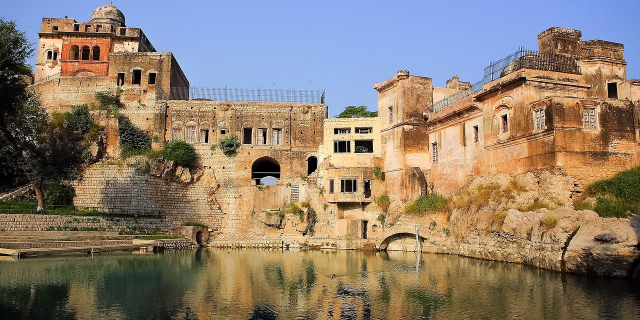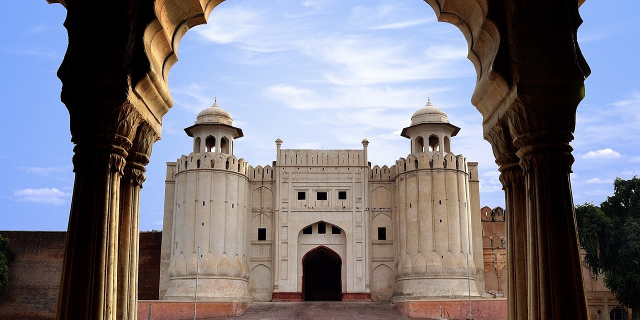Rohtas Fort
Rohtas Fort (Punjabi, Urdu: قلعہ روہتاس, romanized: Qilā Rohtās) is a 16th-century fortress located near the city of Dina in Jhelum district of the Punjab province of Pakistan. Raja Todar Mal, the minister of the Sur king Sher Shah Suri, supervised the construction of the fort which is now one of the largest and most formidable in Punjab.
The fort remains remarkably intact and was declared a UNESCO World Heritage Site in 1997. UNESCO called it an "exceptional example of the Muslim military architecture of Central and South Asia."
Sher Shah Suri, the founder of the Sur Empire, commissioned the Rohtas Fort on the advice of his generals, who suggested him to adopt a scorched earth strategy to defeat the warring Gakhar, a local Punjabi Muslim tribe who were providing bold resistance to the Surs, near the Salt Range region in Punjab.[1][2] Thus the idea of the Rohtas Fort was conceived, with Sher Shah laying down the foundation of the fort.[1] The fort occupied a strategic position between the mountains of Afghanistan and the plains of Punjab, preventing Humayun from returning to India from his exile in Persia.[3] Its name celebrated the Sher Shah Suri's 1539 capture of the Rohtas Fort in the Shahabad district of Bihar from a Hindu prince.[3]
The construction of Rohtas Fort started in 1541 under the supervision of finance minister Todar Mal, himself a Punjabi Khatri.[4][3][5] However, its construction soon stopped when the local Gakhar population was unwilling to work on the construction due to all the male tribesmen taking a vow to not cooperate with the Surs lest be threatened with excommunication or expulsion.[6][3] Thus Todar Mal was not able to find even one labourer to help him in the construction of the fort. This was the case until he under the orders of Sher Shah raised the workers' wages to such a degree that many of the Gakhars became willing to help with the fort's construction.[6][3] Sher Shah Suri did not live to see its completion as he died in 1545 before the fort was completed.[3]
Mughal periodWith Sher Shah Suri's death, Humayan returned to regain his rule of the Punjab region.[3] Rohtas Fort was ceded to Humayun in 1555. As a result, the fort lost much of its defensive significance.[3] It was never popular with the Mughals because of its plain military style and lack of gardens.[3] In the 1580s, Emperor Akbar constructed the nearby Attock Fort that was a better fit to Mughal interests.
Akbar only stayed at Rohtas Fort for a single night. Emperor Jahangir rested there for one night while traveling to Kashmir. He noted, "This fort was founded in a cleft and the strength of it cannot be imagined." Later, after his victorious return from a forced exile in Kabul, Jahangir convened his court at Rohtas Fort for a short time.
During the Mughal era, the fort was used almost continuously until 1707.[4] The Afsharid ruler Nader Shah camped at the fort during his invasion of the Mughal Empire. After that, it was used by the Afghan Durrani chieftain Ahmad Shah Durrani during his invasions of Punjab against the Sikhs.[7]
Sikh Empire periodGurmukh Singh Lamba captured Rothas Fort in 1825 from Nur Khan, a Gakhar chief.[3] Raja Fazal Din Khan was the last to use Rohtas Fort for military purposes when he participated in a successful rebellion led by Sher Singh in the late 1830s; however, the fort never saw any fighting.[3] The Sikh Empire used the fort for administrative purposes until the British took the region in 1849.[8][7]































Add new comment